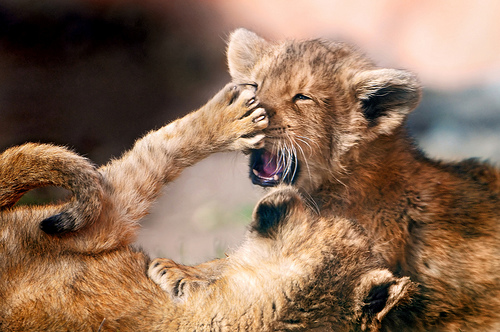Create Key Moments with Secondary Characters
Before we move away from characters for a while, I’d like to get you thinking a bit more about those secondary characters. My aim in this blog is to help you zoom in on the heart of your story, and in last week’s post I gave a scenario that showed how you can make your protagonist and supporting character clash by having their goals, needs, and fears be opposites to some degree. That’s just one way you can not only bring your secondary characters to life but also enhance your overall theme. As I’ve mentioned before, I’m big on themes, and I believe books with well-explored themes can have great impact on the reader. So as you consider your secondary characters and create their lives and personalities, think of a problem they come to face as the book unfolds that will tie in with the theme.
Create a Moment
Here are some other things to think about regarding secondary characters. It’s good if you can come up with a moment or two in the novel that is a special highlight of the relationship between this character and your protagonist. Maybe this is a moment where one of them gets an insight about the other or changes how they feel for the other in some way (for good or bad). When you think of various friends you’ve spent time with over the years, do any particular moments come to mind? What about that uncomfortable time where one of you did or said something unintentionally hurtful, and the fallout from that incident lasted a few weeks before getting resolved? What about the time when your friend revealed something shocking to you? I can remember the moment my good friend Bob confessed to me he had AIDS. He worried that I wouldn’t want to be his friend anymore. I recall the wash of emotion that went through me as I sat there with him. That moment changed the dynamics of our relationship and took it to a deeper level–a level we enjoyed for a number of years until he died.
If you can create a key moment in the novel where something special or intense or important passes between the protagonist and this secondary character, it will do wonders for your story. So many moving, poignant scenes in movies are ones where the two friends have a moment like this. It feels sometimes like a beat or pause in the story, being more reflective and slower paced. But it adds heart, and that’s what this is all about. Let that “minor” character show some depth of emotion, and not in reaction only to the plot playing out or to what the protagonist does. You don’t want this to be a forced mushy moment. You may be writing a suspense thriller. But even then, you could have that short pause in which your protagonist and work colleague have a talk. Let the protagonist learn something new about this other person, get some new insight about them. Let the secondary character see something new in the protagonist.
They Don’t Always Get Along
Think also about creating one moment when this secondary character is really opposed to what the protagonist is saying or doing and voices this opinion. Then find a moment where you can switch this role and have the protagonist opposed to what the secondary character is saying or doing. When are they the most at odds with each other? Often it’s when one or the other has made a big decision. It’s often a turning point in the story and it tests their friendship or work relationship. Most plots involve the protagonist going off on a course that stirs up conflict and opposition, so that’s probably where you would have this moment.
Ask this: How is my protagonist changed by the end of the story by something this other character says or does? If you can set up a way for this secondary character to influence your protagonist in a way that helps or hinders her from reaching her visible goal, she will become an intrinsic and valuable member of your “cast.”
This week, think about creating some moments described above. Find a place in the novel where you could insert a pause with a significant moment between your protagonist and this other character. Think of one other secondary character with whom you can do this with as well but in a different situation and way. Share your ideas and thoughts in the comments!












Hi – what wonderful advice. My cogs have been oiled. Thank you.
Laura E. James.
Thank you for another great challenge!
This gives me pause to consider some of the conflict I’ve already incorporated in my novels. I may want to ramp it up a bit.
Ramping is good!
Good suggestions! I hadn’t focused on all the possibilities of character interaction. Many thanks!
Thank for sharing this. Good insight into something I already knew, but wouldn’t have been able to express. You’re right – this element is often found in novels that take us just a bit deeper and resonate longer.
This is some great insight. In my current WIP, I have two characters who are basically foils for each other, and I’ve been looking for ways to ratchet up the tension between them. This post has helped greatly.
Thank you, C.S
Cheers 🙂
Glad to hear that, thanks!
Just as I was wondering how to give depth to a story I’m building. . .
Thank you, by the way. Thank you very much!
Sammantha
You’re welcome. I often have to go in and develop the secondary characters. In fact, a test reader today told me to do that with the book I’m about to turn in and she’s right. I need to go deeper with a couple of those characters and sometimes it’s easier to go in when you’re done and add some more scenes or rework them a bit.
Great suggestions. I enjoy stories more when the secondary characters have a purpose, and a genuine personality rather than existing simply because the a story must have more than just a protaganist and an antagonist—or in romance, a hero and heroine.
As a reader, I love those moments. Great post! 🙂
Great points. I think I have managed to create good interaction between my protag and two secondary characters who happen to be her former pupils. Their relationship provides conflict as well as agreement on some occasions. I would love for you to visit my blog stated above.
A great word of advice. I’m currently working on a book with a lot of secondary characters, and this made me think of how to add them into certain scenes. Thanks for the help.